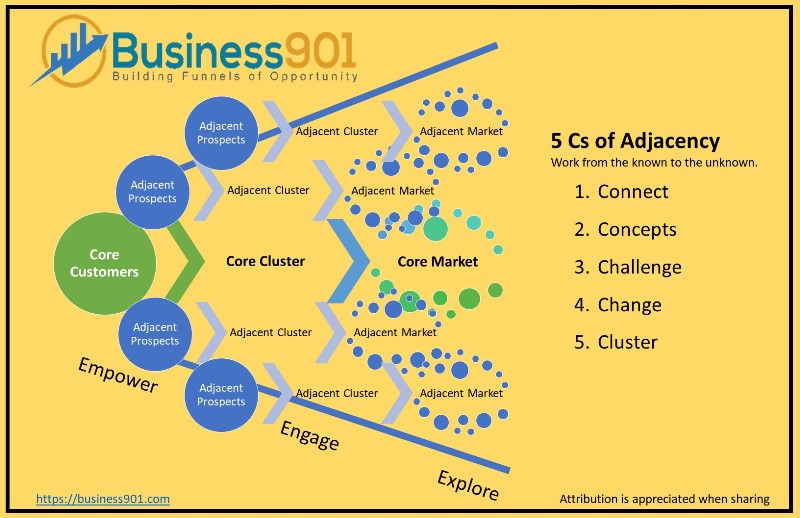The traditional means of marketing still reside within most organizations. They still hire people based on the look and feel of inbound marketing and the “deliverables.” There is always an opportunity. However, there is not a step by step method. Innovators, Start-Ups, and even Scaling Businesses look for that formula and try to think of an effective and efficient way to go about it. The problem that exists is that most opportunities are not created they are discovered. You must venture into the unknown, and most of us are just not Captain Kirk.
Think of the role of an explorer. I go back to explorers of the past that old Columbus, Magellan, Lewis and Clark and Leif Erickson model you might say (And just so we are on the same page lets define the act of exploration as the searching for the purpose of discovery of information or resources). What did they do that others do not? They relinquished the idea of controlling the outcome. When we think of opportunity, it often equates to uncertainty, loss of control. The space that most of us try to define and manipulate others on some desired path to reach/accomplish.
Successful companies do not have a magic formula. If they do, it is a matter of trying more things that put themselves in a better position to recognize or not to recognize opportunity quicker. It is about acting and trying different opportunities along the journey. Explorers are also masters of saying no or preventing from getting to far drawn off. They are grounded in reality. This reality of understanding their own capabilities allows them to seize a moment when it exists. This is often called skill or luck, but it is also about being prepared.
What about exploration at the top of the funnel, not at the bottom? I would argue that adjacent customer behaviors and needs will allow you to explore more than you can handle and is the quickest and most effective way to gain new business. It really becomes that ying and yang approach where both ends eventually meet. The most important thing we can do to create opportunity is to set a path and move to action which most of us do in creating a sales and marketing process (just in the wrong direction). What we don’t do is the third thing relinquish the idea that we can control the outcome. When we can leave that idea go, we accept and evaluate opportunity based on our capabilities. What is so wonderful is that it expands our understanding by letting go. We see things that we have never seen; opportunities that we have never seen. It reminds of an old Zen saying, “to take a deep breath, you must first exhale.”
The typical marketing system is brittle, not malleable. however, markets are not deterministic. They cannot be analyzed, predicted, and processed using cause and effect. This thinking still resides mostly because of a lack of articulated alternative which is inherently difficult in a complex-adaptive world. Markets as a system (Systems Thinking) not a marketing system constantly evolve; partly by random “emergence” and partly by market shaping like an Airbnb or Uber. The difference in thinking is that they are part of the market, rather than marketing to a market.
Markets have always been complex and socially constructed. In the future, we will have shift out strategic thinking to focusing on context (definition of market based on who our customers are), value creation and cooperation in the area use, and non-predictive strategizing and experimentation.
References:
SMASH: Using Market Shaping to Design New Strategies for Innovation, Value Creation, and Growth:
Great by Choice: Uncertainty, Chaos, and Luck–Why Some Thrive Despite Them All
Thinking in Bets: Making Smarter Decisions When You Don’t Have All the Facts

